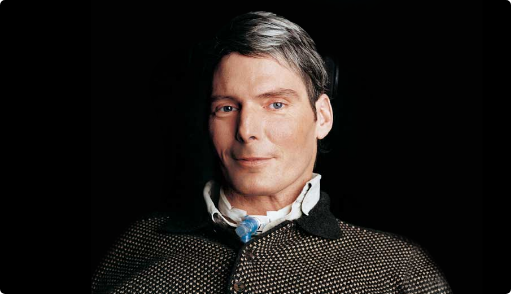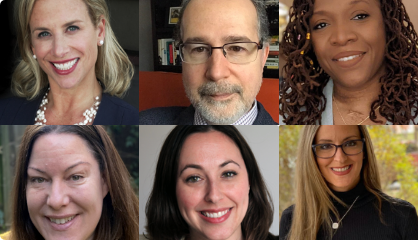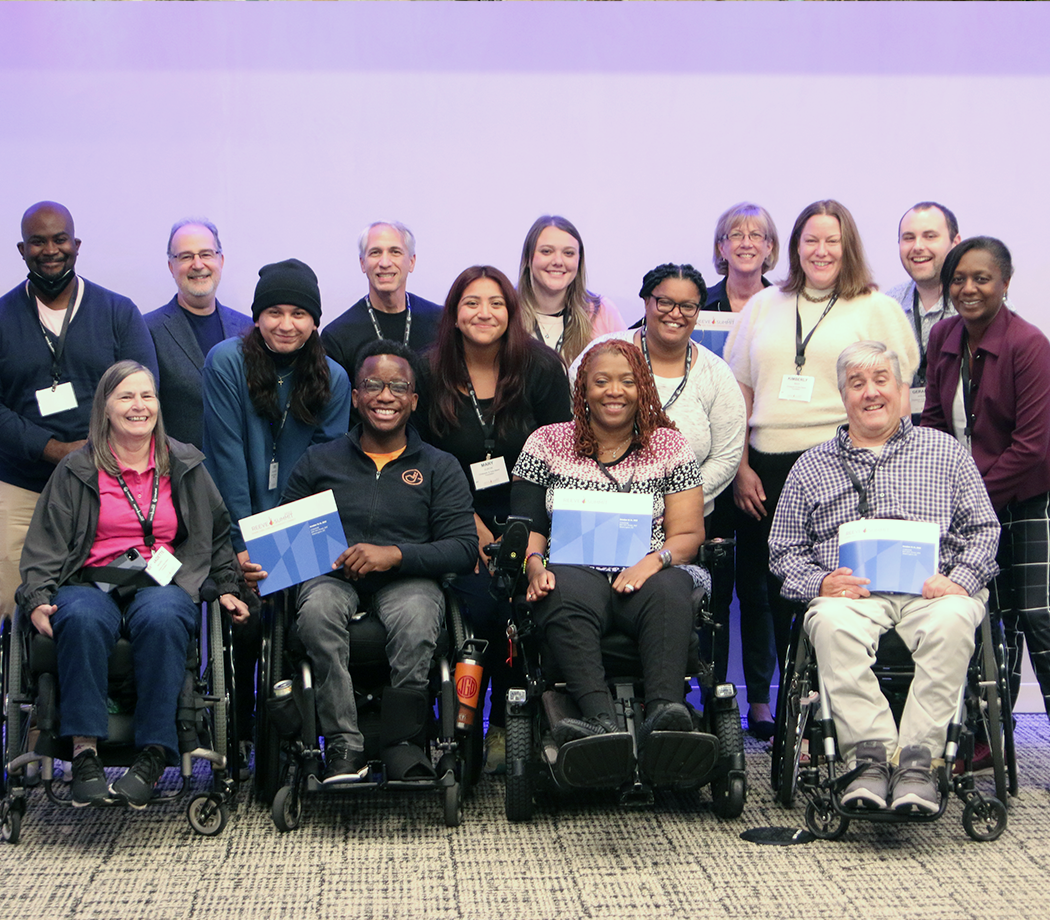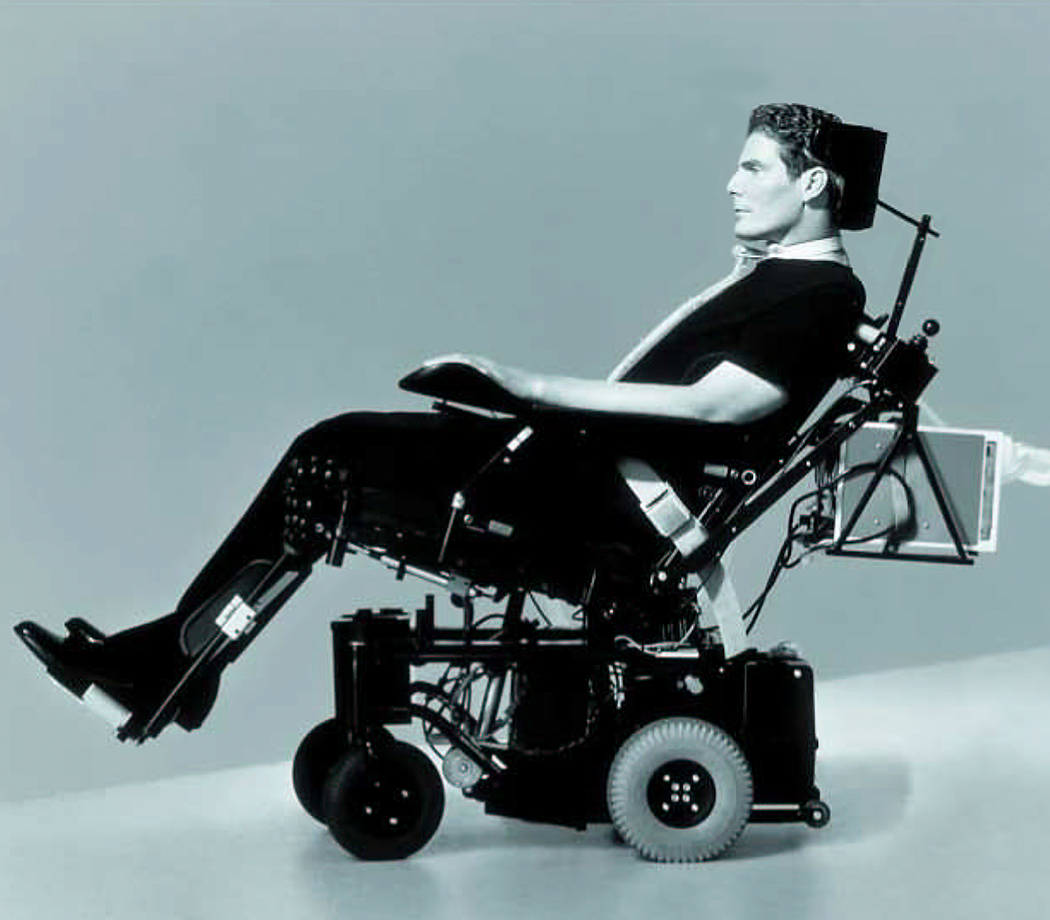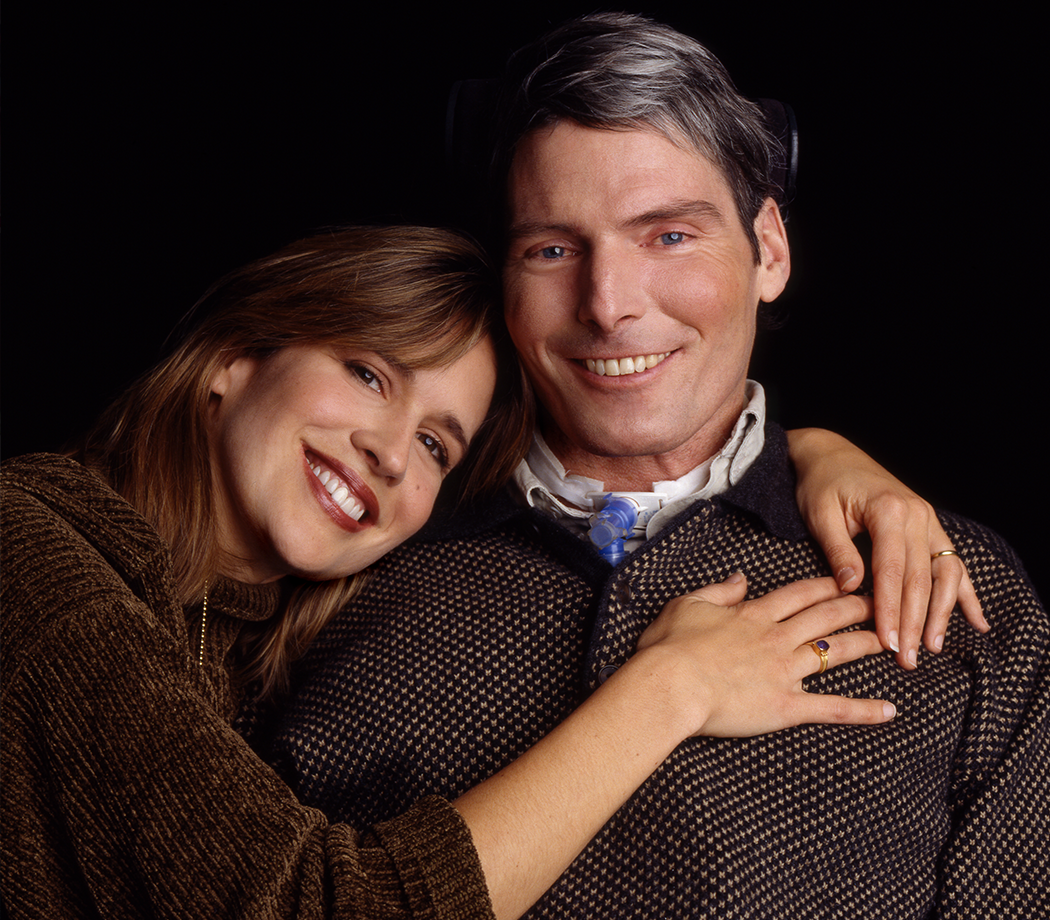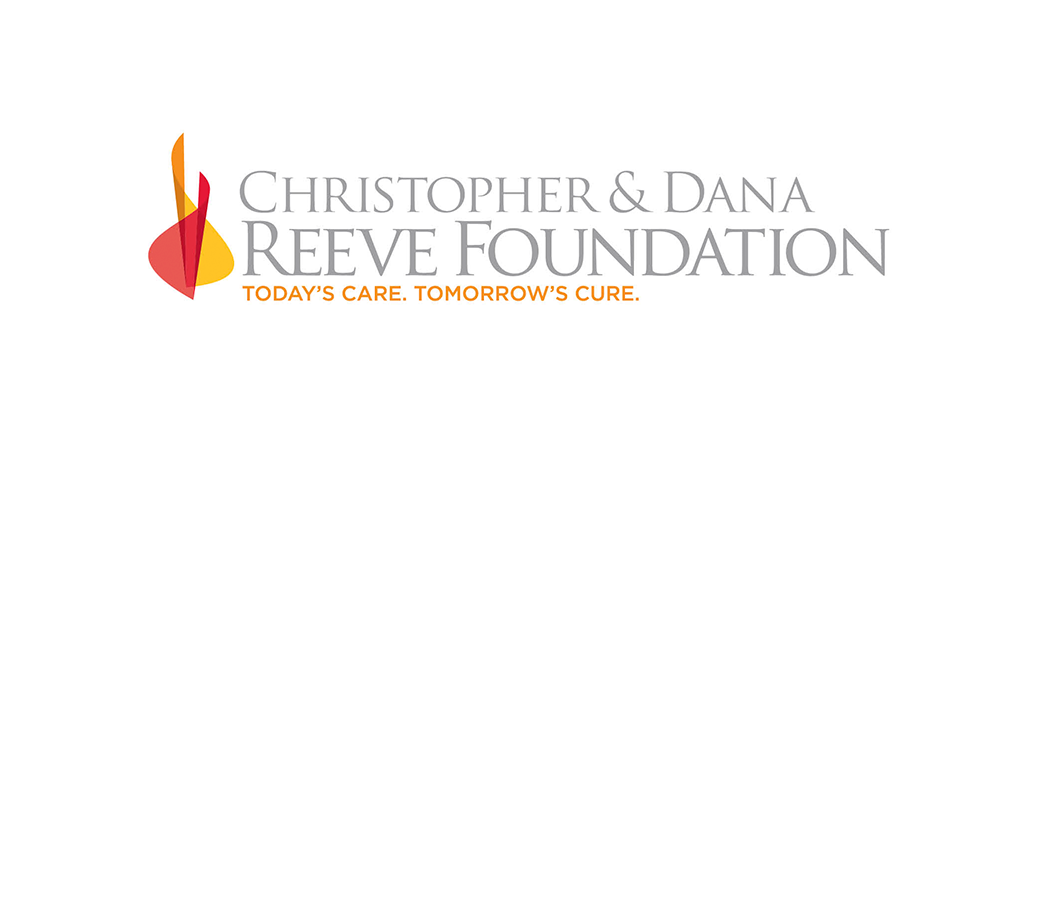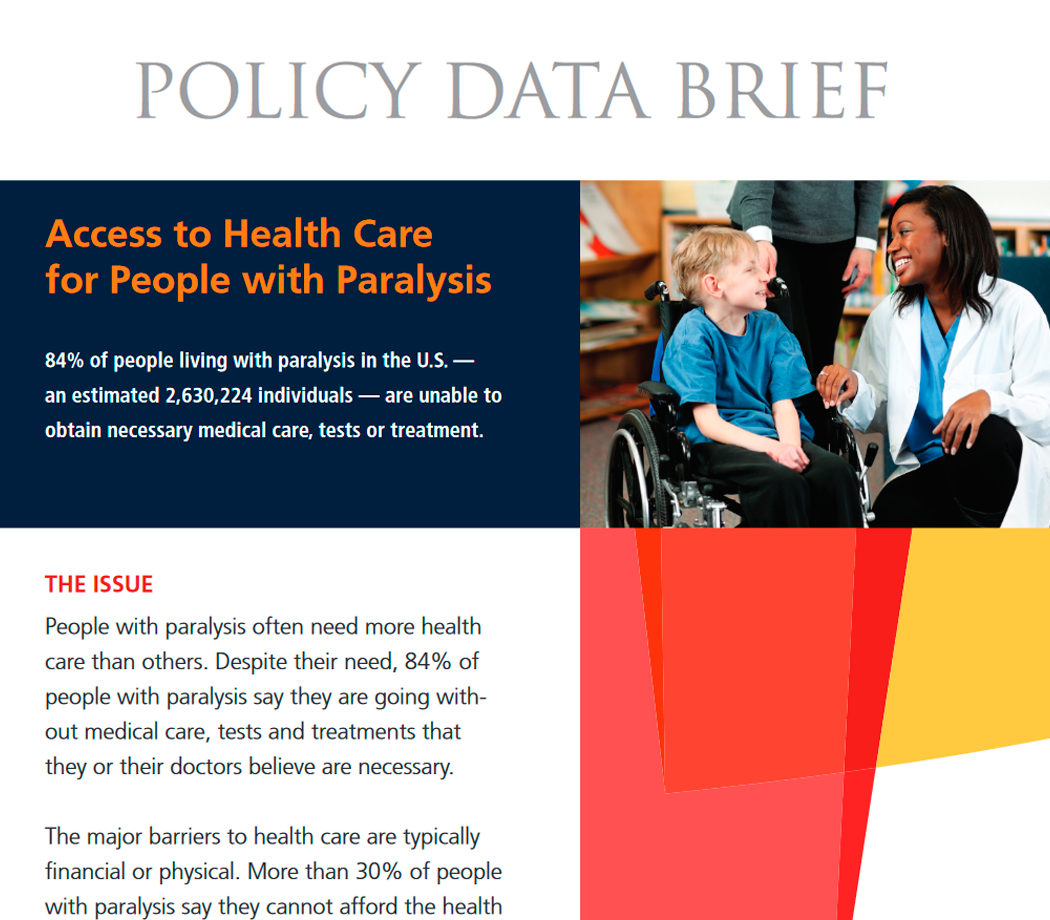Our History
From dedicated community response to a national movement
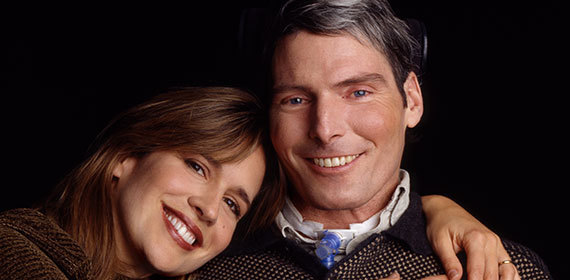
Photo by Timothy Greenfield-Sanders
The Christopher & Dana Reeve Foundation started as a grassroots movement by pioneers who refused to accept the long-standing dogma that a spinal cord, once injured, could never recover or be repaired.
In 1982, New Jersey teenager Henry Stifel was involved in a car accident that left him with quadriplegia at 17. Led by Henry’s father, the family mobilized friends, neighbors, scientists, bankers, and local political leaders to form a foundation to raise money for spinal cord research.
At that point in time, spinal cord research was in its infancy and nicknamed the “graveyard of neurobiology.” But what started as a community response to a crisis quickly grew into a national movement.
Just a few years later, to maximize resources and avoid duplication, the Stifel Paralysis Research Foundation and the American Paralysis Association (APA) joined forces in the mid-1980s under the APA banner. Through its support of cutting-edge basic science, the APA changed the field of paralysis research, transforming it from an obscure specialty practiced by a few scientists in isolated labs to one of the most exciting and collaborative areas of neuroscience.
In 1995, when Christopher Reeve was injured, the APA was one of the first places he and Dana turned. By 1999, the APA and Christopher’s foundation came together and was later named the Christopher Reeve Foundation, which added Dana’s name to its moniker after her untimely death in March 2006.
Christopher and Dana were never celebrity figureheads. Instead, they were hands-on, activist leaders who rallied a swelling chorus of voices advocating for people living with paralysis. They recognized that the true heroes in the spinal cord-injured community are those living with paralysis and their families.
Christopher Reeve created a culture of hope… and it was contagious.
Today, through the Reeve Foundation’s persistence and promise, neuroscientists worldwide agree that repairing the damaged spinal cord is not a question of if but when.
Our Mission
We are dedicated to curing spinal cord injury by advancing innovative research and improving quality of life for individuals and families impacted by paralysis.
“Today’s Care. Tomorrow’s Cure.” reflects the dual purpose set forth by Christopher and Dana to provide a continuum of hope for individuals living with paralysis worldwide.
Christopher Reeve put a human face on spinal cord injury and was unrelenting in his drive to pursue the best research in the world. It was his vision, his passion, and his brilliance that attracted young scientists to take on the cause and advance the field of spinal cord research. Dana Reeve was universally known as the model for caregiving, and her legacy is the creation of our National Paralysis Resource Center, which provides free and comprehensive life-changing resources to those living with paralysis and their families.
Today’s Care
In 2002, the Reeve Foundation’s National Paralysis Resource Center (NPRC) opened its doors thanks to the leadership and vision of Dana Reeve. Through the NPRC, we serve as a free, comprehensive, national source of informational support for people living with paralysis and their caregivers. The primary goals of the NPRC are to foster involvement in the community, promote health and improve quality of life.
Through the NPRC, the Reeve Foundation provides a variety of vital services and programs:
Information Specialists are trained to help anyone – from newly-paralyzed individuals and their family members, to persons who have lived with disabilities for decades – by providing individualized support and information with the ability to respond in over 170 languages.
Peer & Family Support Program fosters peer-to-peer support, via trained and certified mentors. Our ultimate goal is to help individuals find support and resources among the communities who best understand the day-to-day realities and long-term challenges individuals living with paralysis face.
Our Quality of Life Grants Program has awarded over 3,800 grants, totaling more than $44 million in financial support to fellow nonprofits for programs or projects that foster community engagement and involvement while promoting health and wellness for individuals living with paralysis.
The Military & Veterans Program supports the unique needs of current service members and veterans, regardless of when they served or how their injury was obtained.
Advocacy/Policy programs are designed to help individuals advocate for themselves and advance important issues for the greater community of individuals living with paralysis.
Tomorrow’s Cure
Since 1982, the Reeve Foundation’s research investments — more than $140 million to date – have fueled the gains now considered crucial to future treatments, from developing gene therapies to promote axon regrowth in the injured spinal cord to using brain-computer interfaces and neurotechnology to reactivate spinal networks after injury. Reeve Foundation support has not only shaped the field – it has helped create the pivotal moments that propelled it forward.
Now, as 21st century technology and cumulative scientific gains converge, we are on the cusp of a new era in spinal cord injury research and the Reeve Foundation’s research approach is dedicated to developing real-world treatments for people living with paralysis.
We serve as catalyst at this critical moment, uniting academics, scientists, and industry members in a new model of collaboration to accelerate the discovery and development of the promising treatments that are finally within reach.
Specifically, we seek to energize, educate and catalyze the field through:
- Industry Collaborations drive progress and encourage investment in spinal cord injury research by better understanding and addressing the barriers and challenges that limit ambitious engagement.
- Reeve Foundation Symposiums link critical communities, including academics, scientists, industry members, and individuals and families impacted by spinal cord injury.
- Increasing data transparency – around lab gains and failures – helps remove long-entrenched barriers to discovery
- Channeling our financial resources into a robust clinical pipeline designed to rapidly increase the number of treatments moving from bench to bedside.

